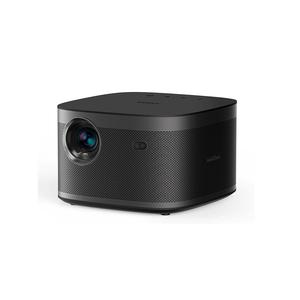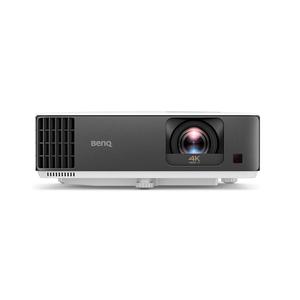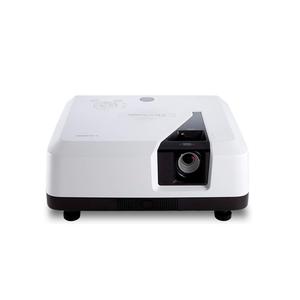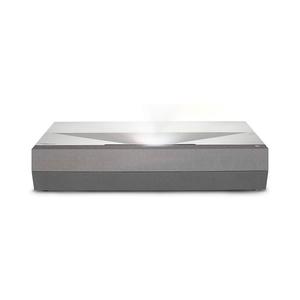What is ANSI Lumens? Discover the Brightness Magic Behind Projector Performance

Have you ever been in a dimly lit room, eagerly waiting for a presentation to begin, only to find yourself squinting at a faint, washed-out projection on the screen? We've all been there, struggling to make sense of the blurry images and strained our eyes to catch every detail. The culprit behind this disappointing experience often lies in the projector's brightness, and that's where ANSI Lumens come into play.
In this blog post, we'll dive into the world of ANSI Lumens and unravel the mysteries of projector brightness. Whether you're a tech enthusiast, a movie buff, or a business professional seeking the best projection experience, understanding ANSI Lumens is crucial. We'll demystify the term, explain how it impacts your viewing experience, and guide you through the factors to consider when choosing a projector. So, get ready to shed some light on this essential aspect of projectors and discover how to make your presentations, movie nights, and gaming sessions truly shine!
Short answer: ANSI Lumens is a standardized measurement used to determine the brightness output of projectors. It represents the amount of light generated by a projector's lamp and projected onto a surface. Unlike regular Lumens, which provide a measure of maximum brightness, ANSI Lumens take into account image quality and variations in brightness across the entire projected image. This standardized benchmark ensures accurate comparisons between different projector models and allows users to choose the appropriate brightness level based on their specific needs and the ambient light conditions of their projection environment. Understanding ANSI Lumens is essential for optimizing image quality, visibility, and overall viewing experience when selecting a projector for various applications, from home theaters to conference rooms and large venues.
- What Exactly is ANSI Lumens
- Difference Between ANSI Lumen and Lumen in Projectors
- How do ANSI Lumens Affect the Image Quality and Visibility in Different Environments
- FAQ About ANSI Lumens in Projectors
What Exactly is ANSI Lumens
ANSI Lumens, often abbreviated as lm or simply Lumens, is a standardized measurement used to quantify the brightness output of a projector. ANSI stands for the American National Standards Institute, which is responsible for establishing industry standards across various fields. In the case of projectors, ANSI Lumens is the accepted standard for measuring and comparing brightness levels.
Put simply, ANSI Lumens refers to the amount of light generated by a projector's lamp and projected onto a surface, such as a screen or wall. The higher the ANSI Lumens value, the brighter the projected image will be.
It's important to note that ANSI Lumens specifically measures the brightness produced within a defined area and takes into account variations in brightness across the entire projected image. This standardized measurement ensures consistent and reliable brightness comparisons between different projector models.
By understanding the concept of ANSI Lumens, you can make informed decisions when choosing a projector that meets your specific needs, whether it's for a conference room presentation, a home theater setup, or any other projection application. In the next sections, we will explore how ANSI Lumens impacts image quality in different environments and the factors to consider when selecting the appropriate brightness level for your projector.
Difference Between ANSI Lumen and Lumen in Projectors
To help you understand the difference between ANSI Lumens and Lumens in projectors, let's break it down into simple terms:
Lumens: Lumens, also known as "raw lumens" or "marketing lumens," is a measure of total light output generated by a projector's lamp. It represents the maximum brightness capability of the projector. However, it's important to note that Lumens alone may not provide an accurate representation of the projector's actual brightness in real-world conditions.
ANSI Lumens: ANSI Lumens, on the other hand, is a standardized measurement developed by the American National Standards Institute (ANSI) that takes into account various factors to provide a more accurate representation of a projector's brightness.
Here's how ANSI Lumens differs from Lumens:
- a. Testing Method: ANSI Lumens are measured using a specific testing method defined by ANSI. It involves measuring the average brightness at multiple points across the screen, taking into account the center, corners, and edges.
- b. Image Quality: ANSI Lumens provides a more reliable indicator of image brightness and quality in real-world scenarios. It factors in the variations in brightness across the entire projected image, giving you a better idea of how well the projector will perform in different lighting conditions.
- c. Standardization: ANSI Lumens offer a standardized benchmark that allows for accurate comparisons between different projector models. It ensures consistency and reliability in brightness measurements across the industry.
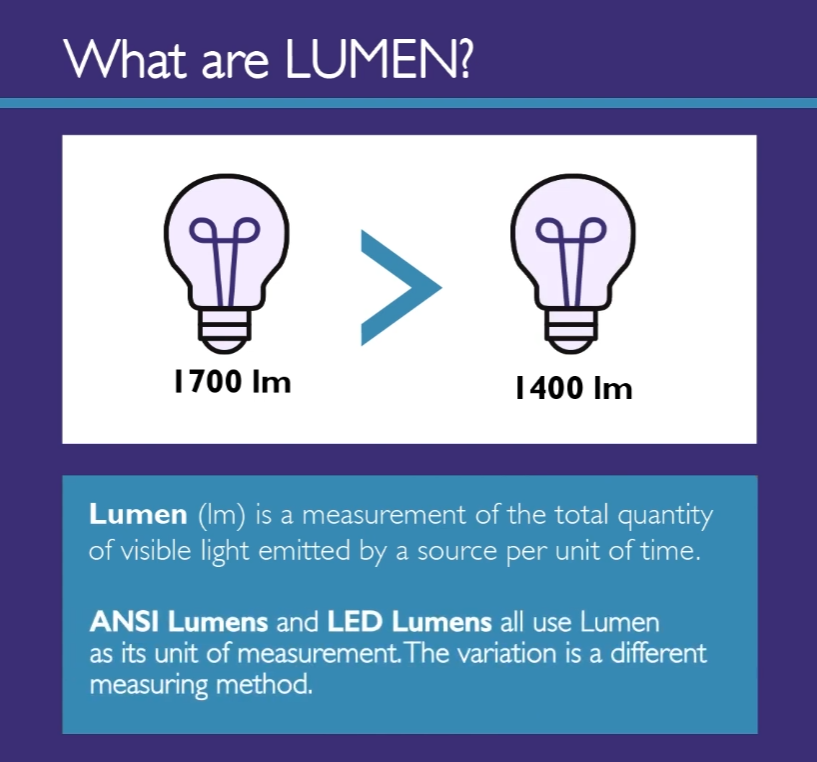
In summary, Lumens refers to the total light output of a projector's lamp, while ANSI Lumens provides a standardized measurement that takes into account image quality and provides a more accurate representation of a projector's brightness in real-world conditions. When comparing projectors, it's generally more reliable to consider the ANSI Lumens value as it accounts for variations in brightness across the entire image.
If you're on the lookout for exceptional projector models, consider exploring our top six picks for 2024:
- Excellent 4K image quality
- Stylish and premium design
- Affordable price
- Intelligent screen adaptation technology
- Powerful and high-quality Harman Kardon speakers
- Android TV 10.0 with a rich selection of applications and functions
- Short-throw projection ideal for small spaces
- 4K resolution with low input lag
- Android TV integration
- Compatible with major gaming consoles
- Easy setup with flexible image adjustment features
- 4K UHD resolution with 3,300 lumens
- Long-lasting light source up to 20,000 hours
- HDR compatibility and SuperColor technology
- Flexible connectivity with HDMI, USB, and more
- 3D Blu-ray ready with 360-degree orientation
- Decent 480p image quality with support for HDR10
- Simple and compact design
- Portability and long battery life
- Dolby Digital Plus and Dolby Atmos
- Android 7.1 with sufficient choice of apps and features
- Highly portable with 180-degree rotation
- Auto Leveling, Focus, and Keystone
- Access to a wide range of smart entertainment options
- Dedicated Gaming Hub
- Immersive 360-degree audio with external audio connectivity options
- Ultra-short throw design
- Laser light source for long-lasting and bright performance
- Built-in soundbar with Dolby Digital 2.0
- Smart TV interface with voice control and streaming apps
How do ANSI Lumens Affect the Image Quality and Visibility in Different Environments
ANSI Lumens significantly impact image quality and visibility in different environments. Here's a breakdown of how ANSI Lumens affect the viewing experience:
-
Dimly lit room or controlled lighting (e.g., home theater):
- Lower ANSI Lumens can still provide a satisfactory viewing experience in a dimly lit room.
- A moderate ANSI Lumens range of 1000-2000 is generally recommended for optimal image quality in this environment.
- Higher ANSI Lumens can lead to a brighter image but may not always be necessary, as excessive brightness can cause eye strain or a washed-out image.
-
Office or conference room with moderate ambient light:
- This environment typically requires a brighter image to combat the presence of ambient light.
- A recommended ANSI Lumens range of 2000-3000 ensures better visibility and image quality, even with moderate ambient light.
- Higher ANSI Lumens can help maintain image clarity and prevent the projected content from appearing dull or faded.
-
Well-lit room or classroom with high ambient light:
- In a well-lit environment, a projector with higher ANSI Lumens is essential for optimal visibility and image quality.
- A recommended ANSI Lumens range of 3000-4000 ensures that the projected image remains bright and clear despite the high ambient light levels.
- Higher ANSI Lumens allow the projected content to stand out and maintain legibility.
-
Large venues or outdoor settings with significant ambient light:
- In such challenging environments with substantial ambient light, projectors need higher ANSI Lumens to overcome the brightness competition.
- ANSI Lumens of 4000 or more are typically recommended for maintaining a visible and vivid image in large venues or outdoor settings.
- Higher ANSI Lumens help the projected content to cut through the intense ambient light and maintain the desired level of visibility.
| Ambient Light Environment | Recommended ANSI Lumens Range | Recommended Lumens Range |
|---|---|---|
| Dimly lit room or controlled lighting (e.g., home theater) | 1000 - 2000 ANSI lumens | 1500 - 2500 lumens |
| Office or conference room with moderate ambient light | 2000 - 3000 ANSI lumens | 2500 - 4000 lumens |
| Well-lit room or classroom with high ambient light | 3000 - 4000 ANSI lumens | 4000 - 6000 lumens |
| Large venues or outdoor settings with significant ambient light | 4000+ ANSI lumens | 6000+ lumens |
Please note that these ranges are approximate and can vary depending on factors such as screen size, screen gain, and personal preferences. It's also worth considering the specific content being projected (e.g., presentations, movies, gaming) as different content may have different brightness requirements.
Keep in mind that higher lumens generally provide a brighter and more visible image in brighter environments, but it's important to strike a balance to avoid eye strain or an excessively washed-out image in darker environments.
When selecting a projector, it's also essential to consider other factors such as the projector's contrast ratio, color accuracy, and the ability to adjust settings like brightness and gamma to optimize the viewing experience based on the specific environment.
Remember, these recommendations serve as a starting point, and it's always a good idea to consult the projector manufacturer's guidelines and consider your specific needs and preferences when choosing the appropriate lumens for your projector.
FAQ About ANSI Lumens in Projectors
What is ANSI Lumens?
ANSI Lumens is a standardized measurement that quantifies the brightness output of a projector. It refers to the amount of light generated by a projector's lamp and projected onto a surface, such as a screen or wall. ANSI Lumens provides a reliable indicator of a projector's brightness, taking into account factors like image quality and variations in brightness across the entire projected image.
How does ANSI Lumens differ from regular Lumens?
Regular Lumens, also known as "raw lumens" or "marketing lumens," represents the total light output of a projector's lamp. It provides a measure of the projector's maximum brightness capability. ANSI Lumens, on the other hand, is a standardized measurement that considers image quality and provides a more accurate representation of a projector's brightness in real-world conditions. ANSI Lumens takes into account factors like testing method, image quality, and standardization, making it a more reliable benchmark for comparing projectors.
How do ANSI Lumens affect image quality and visibility?
The ANSI Lumens value of a projector significantly impacts image quality and visibility in different environments. In environments with dim lighting, lower ANSI Lumens may be sufficient, while brighter environments require higher ANSI Lumens for optimal visibility. Higher ANSI Lumens help combat ambient light, prevent image washout, and maintain clarity and legibility of the projected content. It's important to choose a projector with the appropriate ANSI Lumens based on the specific ambient light conditions of your projection environment.
Are higher ANSI Lumens always better?
While higher ANSI Lumens generally provide a brighter image, it's important to strike a balance based on the environment and the specific requirements of your use case. Excessively high ANSI Lumens can lead to eye strain or a washed-out image in darker environments. Consider factors such as screen size, screen gain, and personal preferences when determining the ideal ANSI Lumens for your projector.
Can I rely solely on ANSI Lumens when choosing a projector?
While ANSI Lumens is an important factor to consider, it's not the sole determinant of a projector's quality. Other factors, such as contrast ratio, color accuracy, resolution, and connectivity options, should also be taken into account when selecting a projector. It's crucial to consider your specific needs, the type of content being projected, and the environment in which the projector will be used.
